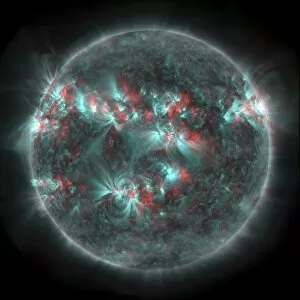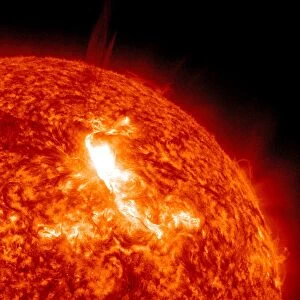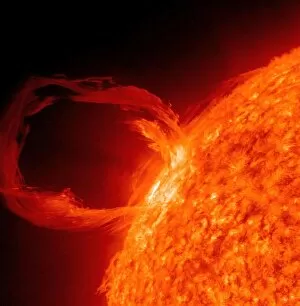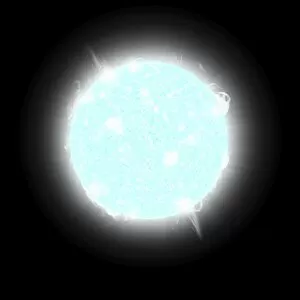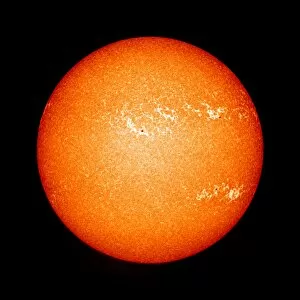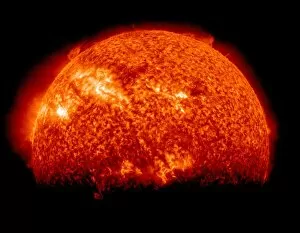Transition Regions Collection
"Exploring the Dynamic Transition Regions of Solar Activity
All Professionally Made to Order for Quick Shipping
"Exploring the Dynamic Transition Regions of Solar Activity: A Journey into the Sun's Fiery Realm" Witnessing solar activity on the Sun is like peering into a mesmerizing cosmic dance. In this captivating 3D view, we behold a full sun adorned with numerous sunspots and active regions, showcasing the sheer power and beauty of our nearest star. As magnetic field lines intertwine across its surface, an M8. 7 class flare suddenly erupts, releasing an astonishing burst of energy. The intensity is palpable as we zoom in to witness a close-up of a solar eruptive prominence, marveling at its intricate structure and fiery tendrils reaching outwards. But that's not all; another breathtaking spectacle unfolds before us – a massive X2. 2 solar flare bursts forth from the Sun's surface. Its brilliance illuminates space as if painting celestial fireworks against the backdrop of infinite darkness. Amidst these awe-inspiring events, we catch sight of an artist's depiction of a blue dwarf star – reminding us that beyond our own Sun lies an entire universe brimming with wonders yet to be discovered. Returning our focus to our radiant star once more, we observe a full view revealing coronal mass ejections gracefully cascading outward like ethereal ribbons dancing through space-time itself. Finally, amidst this symphony of cosmic phenomena emerges one last spectacle – an intense M8. 7 solar flare blazing fiercely upon the Sun's surface. Its radiance serves as both reminder and invitation for humanity to delve deeper into understanding these transition regions where immense forces shape our very existence. In this journey through time and space, we are captivated by the enigmatic nature of solar activity on the Sun - forever inspiring curiosity and fueling scientific exploration towards unraveling its mysteries.

